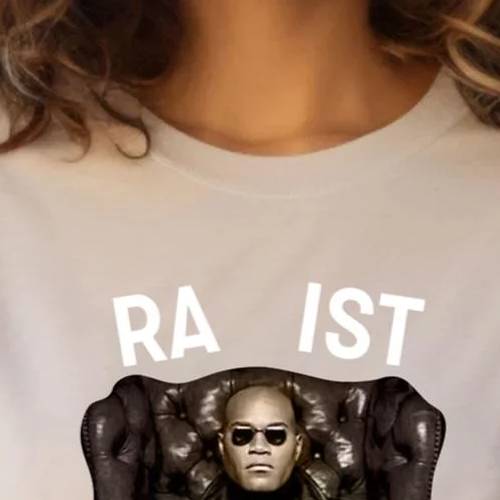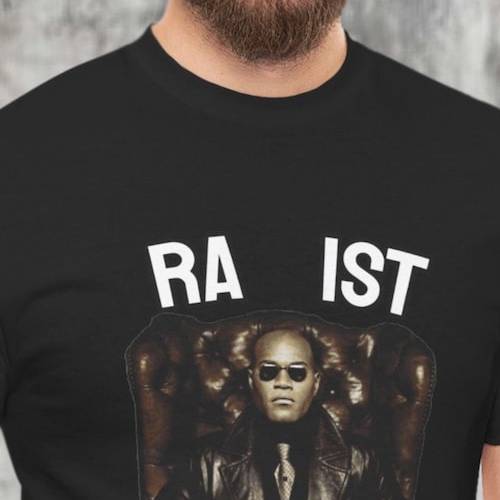The History of Offensive Fashion: Where Does Rapist Racist Shirt StandFashion has always been something beyond mere covering one's body; it is an incredibly powerful means of communication through body language, political participation, and rebellion. However, while boundaries continue to be stretched in this industry, trends and messages have been causing heated debates about moral boundaries in fashion. The most current debate about the Rapist Racist Shirt is an example of this continued struggle between free speech and responsibility to society.The Influence of Scandal in Fashion in SocietyFashion has historically embraced sexuality, protest, and social commentary. From the punk rock movement of the 1980s, which featured studded jackets and shredded garments splashed with anarchist slogans, to contemporary designers such as Jean Paul Gaultier and Versace, the business has consistently questioned cultural standards. However, there is still a narrow line between making a big statement and showing contempt.
The Rise of Controversial Street WearStreet fashion has historically featured bold graphics and statements, which frequently sparked discussion. Some businesses purposely utilize controversial language or imagery to gain attention, but at what cost?
 An excellent choice for a trendy look, effortlessly elevating any outfit
An excellent choice for a trendy look, effortlessly elevating any outfitExamples include:
Sexist or insulting commercials targeting women have sparked significant boycotts.
Human rights organizations have criticized apparel picturing violent or historically contentious people.
Politically charged slogans have been accused of causing pisiveness rather than generating genuine debate.
In this perspective, the t-shirt stands out as another example of how fashion can blur the boundary between social criticism and unpleasant propaganda.
The Rapist Racist Shirts Controversy: A Case StudyAn independent clothing company in NYC has released a T-shirt that has the words, "Rapist Racist" printed on it in broad, black letters. The shirt is meant for societal commentation, however, it sparked outrage.
The Designer's Perspective: Art or Exploitation?The purpose of the shirt is to incite dialogues regarding systemic issues and not to support these statements, as claimed by the anonymous designer. “This is about confronting uncomfortable truths,” he mentioned in an interview. In his defense, he said people were interpreting his message as inflammatory rather than provocative.
Public Reactions and Retailer BacklashThe backlash was immediate. Influencers, activists, and even casual customers found themselves in a debate about whether the
Rapist or Racist T Shirt design was a bold statement opposing injustice or merely a foolish attempt to gain attention. The major retailers severed ties with the brand forcing them to shut down.
Ethical Considerations about Controversial FashionThe t-shirt controversy unveils the wider question of social responsibility in fashion. As a brand, where do you draw the line between responsibility and using shock value?
1. The Balance of Intention and PerceptionNumerous polarizing designs present themselves as ironic or sarcastic, yet in the absence of context, they can be misunderstood. Brands have to be cautious about how messages can be interpreted by perse audiences.
Unless it contravenes rules against hate speech or incitement to violence, people who wear provocative attire are usually protected under the right to free expression. But as regulations differ from one nation to another, protection for such apparel depends on the circumstances.
2. Role of Market and Consumer PerceptionThroughout history, popular sentiment has determined the fate of provocative designs.
Consumer boycotts have compelled companies to remove products from shelves.
The retailers have severed associations with brands endorsing indecent visuals.
Where uncomfortable attire is in contention, free speech battles continue to arise.
In the t shirt situation, critics believe these remarks, although intended to be helpful in nature, can have negative connotations unless explained or worded in an appropriate manner.
The Role of Controversy in FashionWhile controversy can generate publicity, it can also damage a brand irreparably. Businesses have to decide whether short-term shock value is worth risking in the long term.
 The color of this shirt is stunning, making it a standout piece1. Ethics in international brands
The color of this shirt is stunning, making it a standout piece1. Ethics in international brandsCustomers increasingly expect brands to conduct ethically. If not done so, this can result in censure by the public, forced apologies, and in extreme circumstances, an organization's downfall.
2. Social and Legal ImplicationsSome countries have laws that forbid hate speech and obscenity. As fashion is an art form, yet designers have to operate in accordance with laws.
Where should fashion draw the lineFashion can challenge stereotyping and stimulate thought while being ethically done. History has proven that most powerful designs challenge boundaries while not causing harm. Brands should check
Racist Rapist Morpheus Shirt to see if their shock value is serving an affirmative purpose or just taking advantage to gain attention.
In finding the right balance, the sector can continue to be an engine of change in society yet not drive away those inpiduals who it is reaching out to.